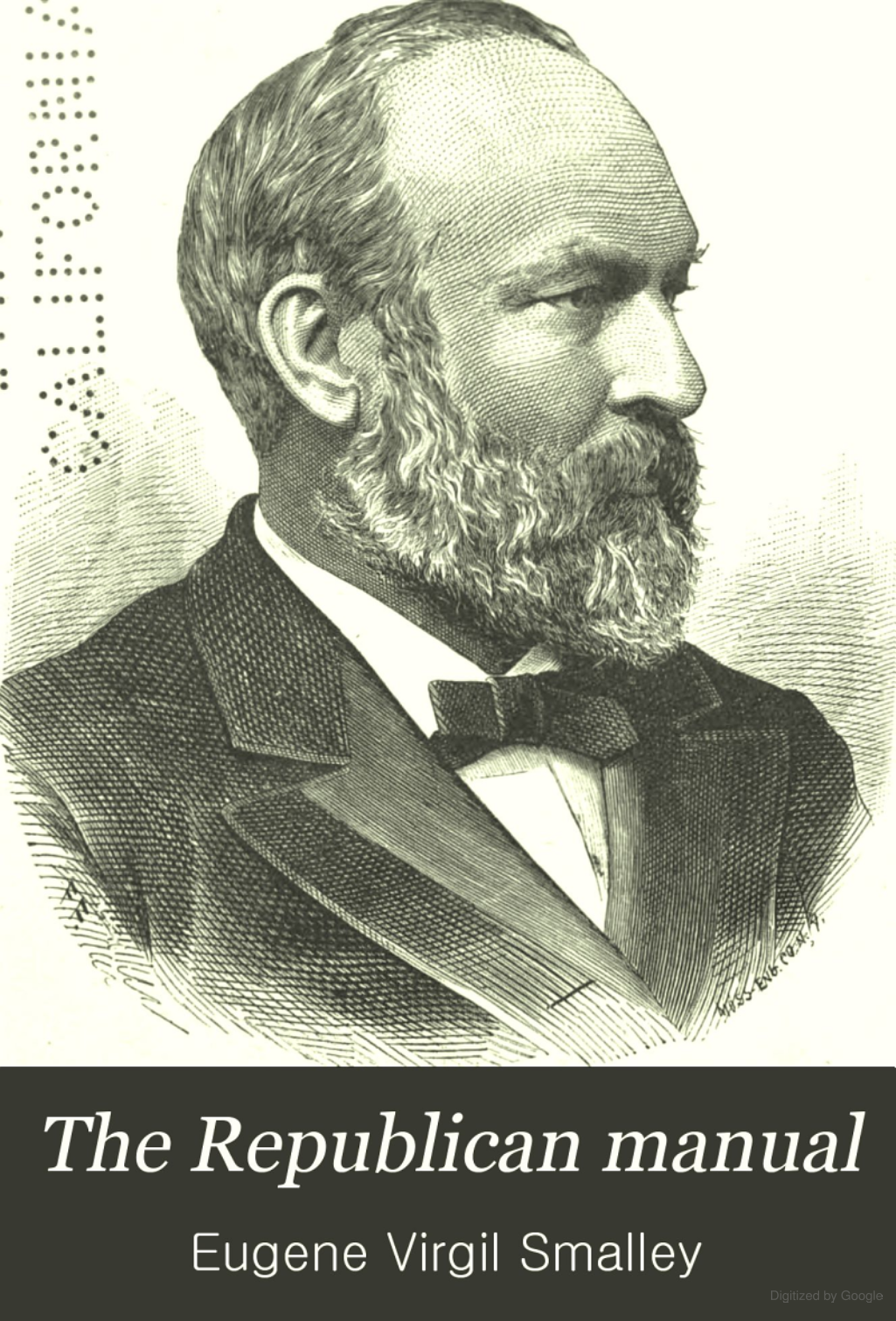
Screenshot of book cover from google.com VISITOR CENTER – Introduction to the 1880 Presidential CampaignJames A. Garfield was a devoted reader of books on all different subjects. You can find a selection of books about the 1880 presidential campaign on display at the Garfield site. Many of these written works have been digitized and are online. We have included links to the ones that are available.
Democrat or Republican?Harper & Brothers published this small Republican-leaning pamphlet in 1880 to inform voters about the differences between the Republican and Democratic parties on several issues. These included financial policies and social issues, including race relations back to the pre-Civil War period. This copy belonged to Republican presidential candidate James A. Garfield and is inscribed inside “with the sincere regard and high esteem of the writer,” though the author’s name does not appear in the pamphlet. The Republican ManualAmerican Book Exchange published E.V. Smalley’s The Republican Manual as an unofficial campaign text in 1880. It provided a history of the party and its achievements along with biographies of presidential candidate James A. Garfield and vice-presidential candidate Chester A. Arthur. The book also contained the full 1880 Republican platform. RECEPTION HALL AND DINING ROOM – Republican Party texts and how J.A.G. got involved
|
Last updated: October 18, 2024

